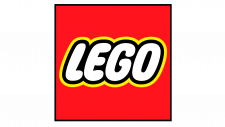Capgemini Logo
Capgemini, a global leader in consulting, digital transformation, technology, and engineering services, excels in harnessing the power of innovation to benefit its clients. With a strong presence across industries, it offers a range of services including cloud computing, cybersecurity, and AI. Capgemini’s operations span multiple regions, with significant market influence in North America, Europe, and Asia. While it is publicly traded, its ownership is diverse, with no single entity holding a controlling stake. This multinational corporation is known for its commitment to delivering technology-driven solutions, emphasizing innovation and customer-centric approaches.
Meaning and history
Capgemini’s journey began in 1967 in Grenoble, France, when Serge Kampf envisioned a company focused on technology and data processing. Named Sogeti initially, the firm quickly set a precedent for growth through strategic maneuvers and key acquisitions.
The 1970s marked Capgemini’s first major leap into international waters with the acquisition of Gemini Computer Systems, a move that opened doors to the global market. This period was also pivotal in diversifying Capgemini’s offerings, notably venturing into consulting services.
During the 1980s, the company embarked on a significant expansion, merging with CAP, a prominent European IT entity, to form Cap Gemini Sogeti. This era was characterized by an increased global presence and a deeper dive into the evolving IT industry.
The 1990s brought about a strategic consolidation and rebranding phase. The company, now known simply as Capgemini, sharpened its focus on high-tier consulting and IT solutions, simultaneously enhancing its footprint in North America through acquisitions like United Research and DASD Corporation.
The turn of the millennium saw Capgemini fortifying its consulting prowess with a landmark acquisition – Ernst & Young Consulting. This move not only expanded its global reach but also fortified its standing in the North American market.
In the ensuing decades, Capgemini aligned itself with the shifting technological landscape, placing an emphasis on areas like digital transformation, cloud integration, and cybersecurity. This shift was bolstered by strategic acquisitions, including notable companies like IGATE and Altran.
Capgemini’s story is one of continual adaptation and innovation. From its modest beginnings as a regional IT firm, it has transformed into a global powerhouse in consulting and technology services, with a robust presence across various industries and continents. Its history is a narrative of strategic growth, sector diversification, and a consistent commitment to leveraging technology for advancing business solutions.
What is Capgemini?
Capgemini stands as a global beacon in the consulting and technology services arena, renowned for its expertise in digital transformation, IT, and engineering solutions. With a history rooted in innovation and strategic growth, it serves as a pivotal partner for businesses navigating the complexities of the modern digital landscape. This multinational corporation, born in France, has evolved into a key player across various industries, delivering cutting-edge solutions that blend technology with human ingenuity.
1967 – 1996
The logo depicts “SOGETI” in bold, azure blue letters, asserting its brand with clarity and strength. A solitary orange dot punctuates the ‘i’, a nod to uniqueness. Below, the phrase “Part of Capgemini” is subtly included, linking Sogeti to its well-known parent in lighter blue, reinforcing the connection while maintaining distinct identities. The graphic element resembling a spade in a lighter blue shade next to “Capgemini” adds a fluid, adaptable quality to the image. This logo merges confidence with a dash of creativity, encapsulating Sogeti’s role as a dynamic subsidiary within the larger Capgemini ecosystem.
1996 – 2017
The logo portrays Capgemini’s brand with a sleek, modern design. Dominating the visual is the company name in a crisp, serif typeface, suggesting a blend of tradition and innovation. The emblem above, a stylized spade in a gradient of sky blue, adds a touch of creativity and could symbolize strategic depth and value, reminiscent of the suit in a deck of cards. Below the company name, three words: “CONSULTING,” “TECHNOLOGY,” and “OUTSOURCING” are spaced out, each separated by dots, emphasizing the company’s core areas of expertise. This strategic spacing might imply the comprehensive and interconnected services offered by Capgemini.
Compared to the previous Sogeti logo, this one marks a shift towards a more streamlined and integrated brand representation. The color palette has also shifted from a mix of blue and red to a monochromatic blue scheme, reinforcing a corporate identity that’s both cohesive and calming. This evolution in design reflects a maturing brand as it moves towards a more globally unified and distinctive corporate image.
2017 – Today
The updated Capgemini logo showcases a creative interpretation of the spade symbol, now featuring a gradient transition from light to darker blue tones. This design choice embodies depth, innovation, and a tech-forward approach, aligning with the company’s ethos. The Capgemini name appears in a lively blue hue, utilizing a friendly and modern font that resonates with the brand’s commitment to user-friendly and sophisticated technological solutions.
This latest logo iteration marks a significant shift from its predecessor. The transition to a gradient spade symbolizes the dynamic and evolving nature of Capgemini’s services. Moreover, the shift from a traditional typeface to a more fluid, informal script reflects a departure from conventional corporate styles. This change aims to appeal to a modern audience seeking user-friendly digital solutions. The visual evolution of the logo is a testament to Capgemini’s adaptability and readiness to embrace rapid changes in the technology sector.














